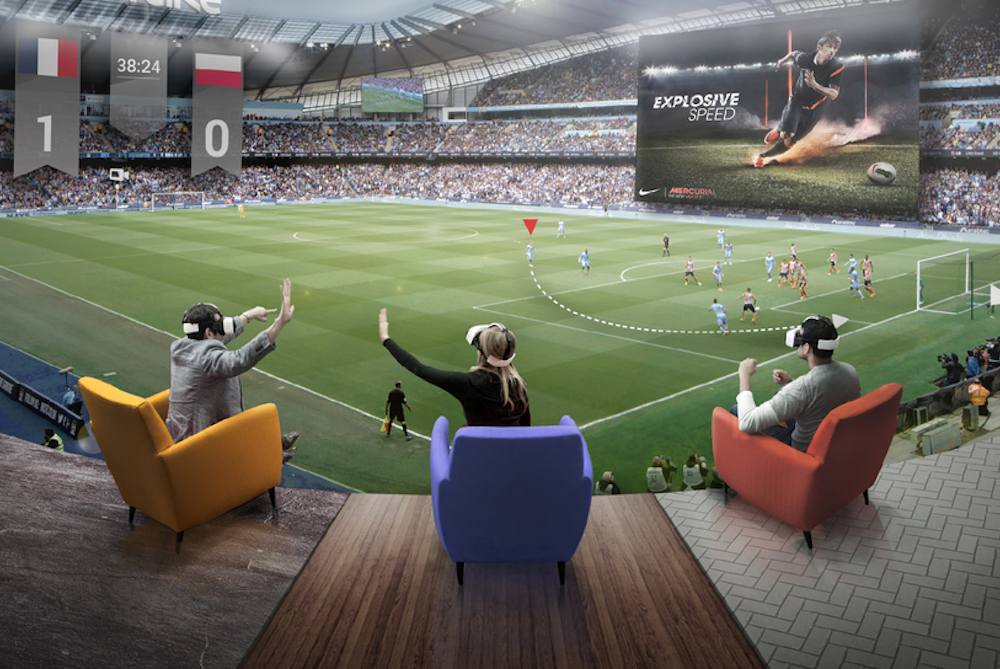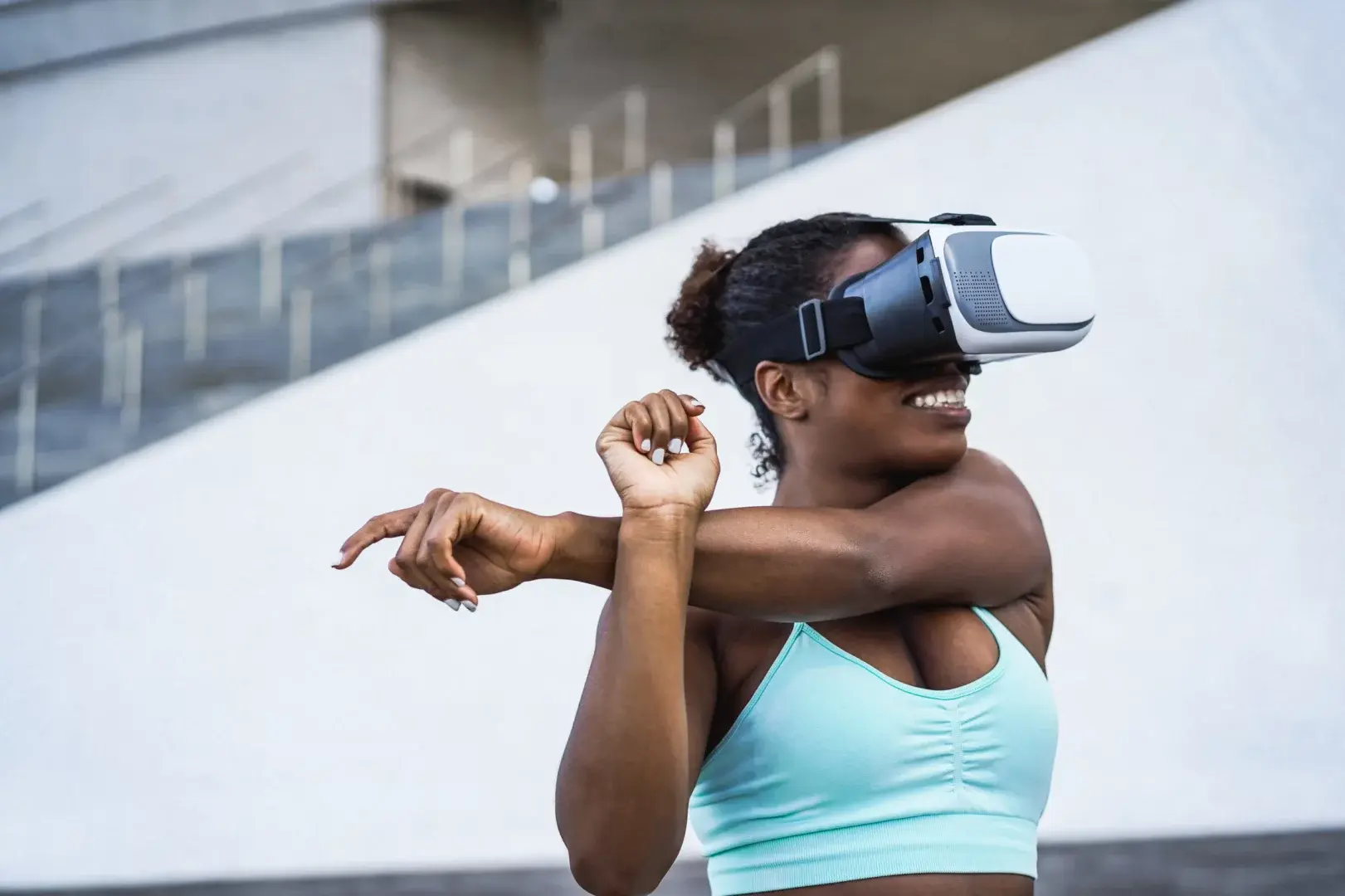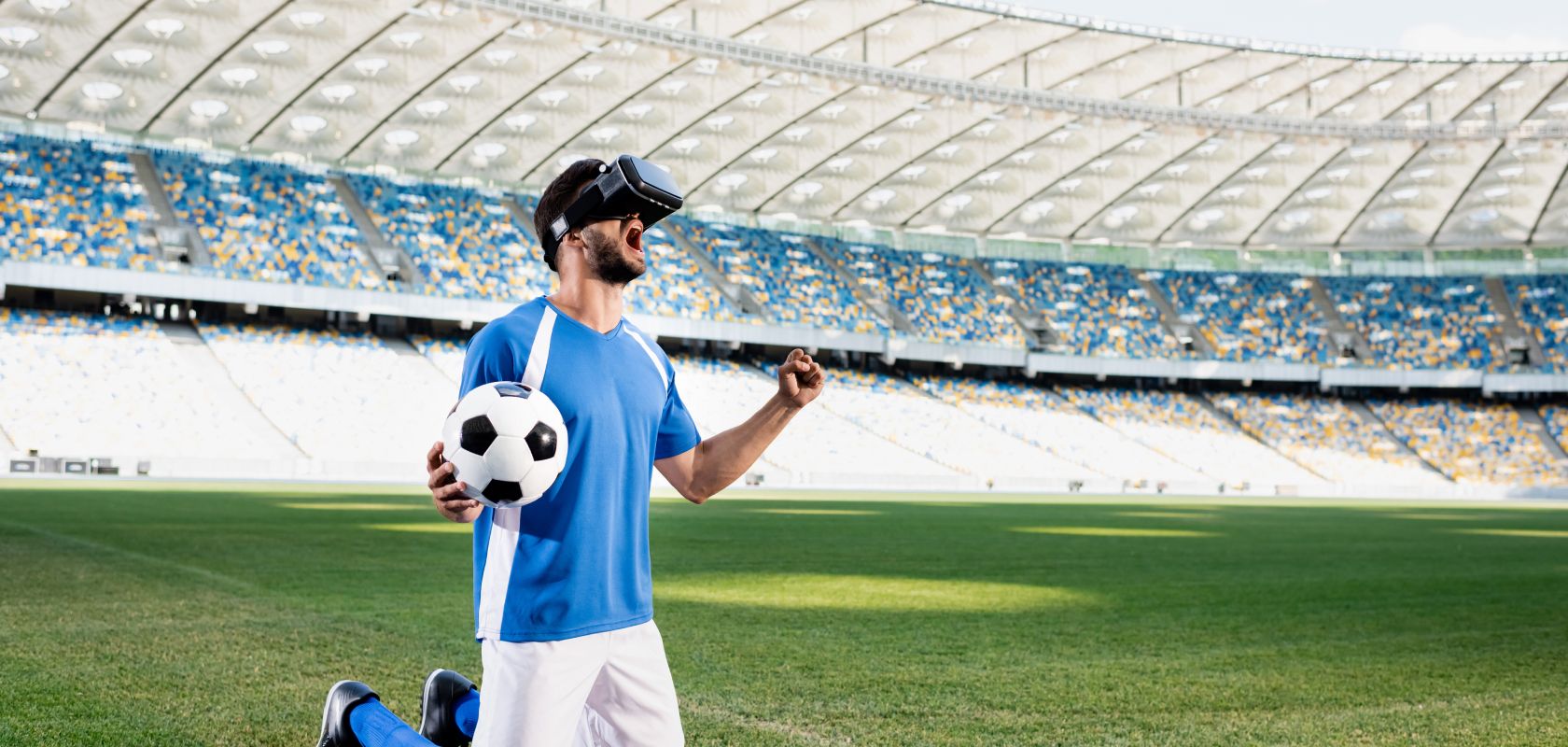In 2025, the fusion of technology and athleticism has given rise to new training paradigms one of the most exciting being Virtual Reality. This immersive tool is transforming how athletes prepare, visualize, and perform at elite levels, both physically and mentally.
Virtual Reality is no longer just for gamers or entertainment enthusiasts. It’s become a cutting-edge asset in professional sports training, offering simulations so real that athletes can practice for game-day pressure in a controlled environment—without stepping onto the actual field.
Let’s explore how Virtual Reality is revolutionizing athletic training across multiple sports and why it’s one of the most powerful tools in an athlete’s arsenal today.
1. Virtual Reality: The New Arena for Training

Virtual Reality allows athletes to train in ultra-realistic, computer-generated environments that mimic real-world situations.
-
Enables athletes to practice plays and scenarios without physical strain
-
Offers 360-degree vision and interaction through VR headsets and haptic devices
-
Can simulate crowd noise, game speed, and opponent movement for realistic prep
-
Customizable for sport-specific drills, strategies, and conditions
-
Saves time and physical energy, especially during injury recovery periods
From quarterbacks reading defenses to batters tracking fastballs, VR provides a unique edge in preparation.
2. Enhanced Decision-Making Under Pressure
One of the greatest advantages of Virtual Reality in sports is its ability to sharpen cognitive skills.
-
Helps athletes improve reaction times, spatial awareness, and tactical thinking
-
Replicates high-pressure moments (e.g., penalty kicks, buzzer beaters) to build composure
-
Coaches can customize simulations to test athlete response under fatigue
-
Reduces mental errors during real-time gameplay by building muscle memory
-
Teaches athletes how to anticipate and adapt to dynamic, evolving scenarios
By training the mind along with the body, VR builds smarter and more strategic players.
3. Sport-Specific Use Cases of Virtual Reality

Virtual Reality has already been adopted by leading teams across a wide range of sports. Here’s how it’s being applied:
Football (American)
-
Quarterbacks use VR to review defensive alignments and practice reads
-
Linemen simulate blocking schemes without risking injury
-
Playbooks are uploaded into VR modules to help rookies learn systems faster
Soccer
-
Goalkeepers train to read penalty kicks and simulate real match conditions
-
Midfielders practice spatial positioning and passing under pressure
-
Coaches use VR to illustrate tactical formations and teach positional play
Basketball
-
Players simulate free-throw situations with distractions and crowd pressure
-
Defensive drills focus on footwork and switching in real-time
-
Coaches analyze decision-making in pick-and-roll or isolation scenarios
Baseball
-
Batters face virtual pitchers to improve timing and pitch recognition
-
Catchers rehearse positioning and framing in simulated game environments
-
Outfielders practice tracking fly balls with unpredictable wind or lighting
4. Injury Recovery and Load Management
Another key benefit of Virtual Reality is its ability to keep athletes mentally sharp while rehabbing from injury.
-
Athletes can participate in virtual scrimmages without risking reinjury
-
Helps maintain tactical understanding and muscle memory during downtime
-
Eases transition back into full competition by providing realistic practice
-
Reduces overtraining by replacing physical reps with cognitive ones
-
Encourages active mental engagement during rest periods
This is particularly important in sports where decision-making and timing are crucial.
5. Coaching and Team Communication
Virtual Reality is not just for athletes—it’s a coaching game-changer.
-
Coaches create custom VR playbooks and run scenario-based drills
-
Improves communication between positions and departments (e.g., offense and defense)
-
Accelerates the learning curve for new players or transfers
-
Enables real-time performance feedback based on athlete decisions in VR
-
Increases engagement during strategy sessions and film review
With VR, coaching becomes more immersive, visual, and intuitive.
6. Training Accessibility and Customization
Not every athlete has access to elite training facilities—but with Virtual Reality, training becomes more democratized and customizable.
-
Athletes can train anywhere: home, gym, or hotel room
-
Affordable VR hardware like Oculus Quest or Pico VR makes adoption easier
-
Software developers offer subscriptions for sport-specific training modules
-
Personal trainers can design sessions tailored to an athlete’s strengths and weaknesses
-
Great for youth development, amateur athletes, and remote coaching setups
This accessibility makes it easier for underrepresented or geographically isolated athletes to level up.
7. Mental Health and Visualization Benefits
Virtual Reality also supports the mental well-being of athletes, which is a growing focus in modern sports science.
-
Offers visualization exercises that reduce anxiety and boost confidence
-
Teaches mindfulness and breathing techniques within virtual landscapes
-
Prepares athletes mentally for stadium atmospheres, hostile crowds, or media pressure
-
Reduces fear of failure by simulating successful repetitions
-
Reinforces positive neural pathways through immersive goal-setting experiences
Mental rehearsal has always been a part of championship culture—VR just makes it more tangible and powerful.
8. The Future of Virtual Reality in Sports

As VR technology evolves, expect even deeper integration in sports training environments:
-
AI will power real-time adjustments in scenarios based on athlete behavior
-
VR headsets will become lighter, wireless, and more affordable
-
Integration with biometric feedback (heart rate, eye tracking, brain waves) for adaptive learning
-
Team-based simulations will allow entire squads to “scrimmage” remotely
-
Cloud-based performance analytics will enable coaches to review VR data like film
The blend of Virtual Reality, AI, and biomechanics will lead to smarter training ecosystems where every athlete receives highly personalized, results-driven programming.
Final Thoughts: Why Virtual Reality Is a Game-Changer in Sports Training
In 2025, Virtual Reality isn’t just a futuristic gimmick—it’s a powerful, practical tool changing the way athletes train, recover, and perform. Whether it’s simulating game-day chaos, reducing injury risk, or enhancing mental sharpness, VR is raising the bar across every level of competition.
Here’s why it matters:
-
Faster learning: Athletes can repeat scenarios hundreds of times without physical strain.
-
Smarter training: Real-time feedback improves decision-making and form.
-
More confidence: Mental rehearsal builds resilience and focus under pressure.
-
Equal opportunity: Access to elite training, regardless of location or income level.
From gym to game day, Virtual Reality is no longer the future of training—it’s the present. And it’s only going to get better from here.



